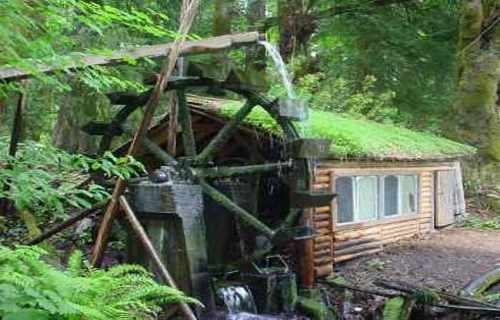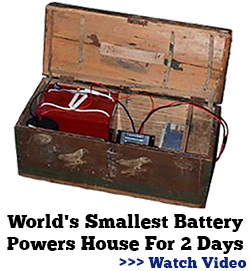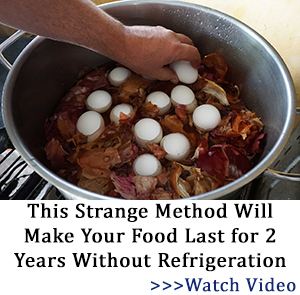Have you ever noticed how many things we tend to take for granted? When we wake up in the morning and head to the bathroom to get ready for school, we don’t give much thought to how we’ll see in the dark. We just take it for granted that we’ll flip the light switch and, like magic, the lights will come on!
But have you ever thought about how many things have to happen for those lights to come on when you flip that switch? For starters, you have to have electricity flowing to the outlets and switches in your house.
Where does the electricity you use come from? There are many different ways to produce electricity. Some people have electricity generated by power plants that burn coal. Others might get their electricity from wind turbines.
Up until we started mining coal in the 1800s, all energy that mankind generated was renewable. That’s pretty staggering when you think about it. We burned fires for warmth, harnessed wind for sailing and used water to power mills. Today, renewables are big news again, with people becoming increasingly conscious of how they can help protect the environment and even save money.
Nowadays, we call it microgeneration. That’s the production of heat and electricity from renewable sources, including wind and solar, to you and me! But like the name suggests, microgeneration is all about generating energy on a smaller scale. So instead of linking up to the main grid, communities and businesses can generate power from their own sources.
Microgenerated power doesn’t have to be used in isolation – it can be used as a back-up for when another power source fails. And whilst people can do it in their own homes, microgeneration is particularly useful for bigger projects – like new housing developments or businesses – where new technologies can make a massive difference.
So what kinds of microgeneration are there? And how do you know if they could work for you? Here’s our very practical step-by-step guide to microgeneration:
Choose your method of microgeneration

With so many options out there, how do you choose which technology is right for your home, business or project? A lot depends on the amount or type of energy you need, what you want to happen to any waste energy that is generated and what your site is suited to. These kinds of questions will help you decide which method could work for you. Here it goes:
If you want to make sure every last kWh is put to good use
… Then combined heat and power (CHP) is a good option. CHP technology ensures any ‘waste’ energy will be reused to heat water or will go to the national grid. And that means ultimate peace of mind for people who want their energy production to work hard.
If you want to generate energy for heating and hot water
… Then heat pumps are a clever solution. There are two types of heat pumps – air source and ground source. These extract naturally occurring heat from the outside air and from under the ground respectively. The main difference is that an air pump is located outside your house or building, whereas the ground pump is located inside.
If your site is near the sea or on high ground
… Wind energy could be the best choice. A totally renewable source of generation, energy is generated by wind moving the blades of a turbine and spinning the motor to generate electricity. Not all sites are suitable for wind turbines though, so speak to an expert to find out if this is right for you.
If you want to generate just water or just electricity
Solar energy can be produced in several ways, so is really flexible. Photovoltaic panels capture the sun’s energy to create electricity, whilst solar tubes do the same for hot water. If you’re looking for energy to complement an existing generation source, this could be the option for you.

Still others who live near rivers may get their electricity from an entirely different source. What are we talking about? Hydroelectricity, of course!
Hydroelectric power is generated by flowing water. If you live near a river that has dams, you might very well benefit from hydroelectricity. So just how does a dam convert flowing water into electricity?
It’s actually fairly simple and straightforward. Hydroelectric and coal power plants produce electricity in a similar way. Both use a power source to turn the propellers of a machine called a turbine. As the turbine spins, it turns a metal shaft connected an electric generator, which is basically a motor that produces electricity.
In the case of a hydroelectric dam, it’s flowing water that’s used as the power source to turn the turbine. Hydroelectric dams are constructed with a special passageway — called the penstock — for water. These passages are sloped downward to create a flow of falling water.
As the water falls down the passageway, it’s directed past the propellers of the turbine. The force of the flowing water turns the turbine, which in turn spins the metal shaft in the electric generator that produces electricity!
But why are dams necessary? Could you just construct a hydroelectric plant on any river? Not exactly. Hydroelectric dams need to be constructed on large rivers that have a large drop in elevation. The dam stores water that can then be controlled by engineers to regulate the water flow to produce electricity on demand at a specific rate.
Unlike coal, which is burned to produce steam to turn the turbines in a coal power plant, the water used in hydroelectric dams keeps flowing. Thanks to the natural water cycle, hydroelectric power plants take advantage of an easily renewable energy source!
Try It Out
Isn’t it cool how the energy of flowing water can be used to generate electricity? Keep the spark of learning alive by checking out one or more of the following activities with a friend or family member:
Field trip time! Ask an adult to take you to see a dam in person. Of course, it will help if you live near a major river. If you don’t, this field trip could take a few hours. Still, it’s worth the trip. There are all sorts of fun, family activities you can do in areas with large waterways. Go exploring and see what water-related fun you can find. Be sure to visit a nearby dam and ask if tours are available. It’s incredible to see such a large, man-made structure effectively control a mighty, raging river!
What sources of electricity are available where you live? Talk to your parents about what type of electricity your house uses. What is the main source of that electricity? Coal? Wind? Hydroelectric power? Solar? Do some independent Internet research to learn more about what environmentally-friendly, renewable sources of energy might be your sources of power in the future. Which types do you think would work best where you live?
Ready to see the magic of hydro power up close and personal? All you’ll need are a few simple supplies and some help from a friend or family member. Just jump online to check out the instructions for How To Make Your Own Model of a Water Turbine. Gather your supplies and get to work! Isn’t it fun to make science come to life right in your own home or classroom? Be sure to explain how hydroelectric power works to your friends and family members who are helping you. Show them how your homemade water turbine functions in a similar way to the huge turbines that are powered by hydroelectric dams!
Hydropower accounts for approximately 75% of the nation’s total renewable electricity generation, making it the leading renewable energy source of power.
Hydropower turbines are capable of converting more than 90% of available energy into electricity, making it the most efficient form of electricity generation. By comparison, fossil fuel plants are only approximately 50% efficient.
In addition to providing low-cost electricity, multi-purpose dams provide water for irrigation, wildlife, recreation and barge transportation and flood control benefits.
A medium size water wheel electric generator can provide enough electricity for one house (3 bulbs, one TV and one radio all running at the same time). Not only you will no longer dependent on the power grid, but you’ll have electricity when SHTF and more important: absolutely FREE. Unlike solar panels, a water wheel electric generator can produce electricity 24/7.
Hydroelectricity is the world’s largest and cleanest source of renewable energy. But despite lively interest in renewables generally, there is an information vacuum about the smallest version of the technology dubbed “the simplest, most reliable and least expensive way to generate power off grid.”
Turbines–All of the commercial micro hydro generators available today use a small turbine connected to an electrical generator or alternator. Water is collected in an intake pipe upstream, travels down to the turbine in plastic pipe, and is forced through one or more nozzles by its own gravity pressure. No dam is needed; systems without a dam are called “run of river” systems. Power is generated by a generator or alternator directly connected to the turbine wheel (no gears or pulleys needed). All of the factors below must be calculated correctly for your micro-hydro equipment to make power most efficiently. All commercial micro-hydro setups are custom-made by the manufacturer for your specific application. For proper operation, you must supply the manufacturer with specific data about your site, most importantly the vertical drop in feet (called “head”), the amount of water flow available during different seasons in gallons per minute, and the length of pipeline required to get a sufficient head.
In general, for a water turbine you need at least 3 feet of fall and at least 20 gallons per minute of flow. If you have more fall (head), less water is required. You can calculate potential head with a water level, a contractor’s level and stadia rod, or with just a string level attached to a measuring stick. The more fall and flow that you have, the more potential power you can generate. You can measure flow by building a weir in the creek and measuring how fast it will fill up a 5 gallon bucket.
Your pipeline must be of a big enough diameter to minimize friction loss in the pipe. Your micro-hydro supplier can give you specific information regarding this.
Nozzle size and turbine wheel type are all interrelated to your total head and flow. Again, your hydro supplier will customize these for your specific application. Often, different size nozzles are designed to be switched in and out as stream conditions change throughout the year.
There are two main types of turbines, impulse and reaction. With impulse turbines, a jet of water is created by the nozzle and squirted onto the wheel. Reaction turbines are more akin to propellor that spins INSIDE the pipe, generating power.
The 3 primary impulse turbine wheel types are Pelton, Turgo, and Cross-flow. Pelton wheels are used in low flow, high head conditions, and Cross-flow wheels are for high flow, low head installations. Turgo wheels are somewhere in the middle. Francis and propellor turbines are the most common reaction type; the Francis design is very similar to the innards of a centrifugal pump. A Kaplan turbine is also similar to this design.
Home built reaction turbines have been built using centrifugal pumps running in reverse (generating power with moving water instead of using power to move the water). We hope to have more information about experimenting with this soon.
In order to generate electricity from the kinetic energy in moving water, the water has to move with sufficient speed and volume to spin a propeller-like device called a turbine, which in turn rotates a generator to generate electricity. Roughly speaking, one gallon of water per second falling one hundred feet can generate one kilowatt of electricity.
The composite system powers communications equipment, three freezers, propane furnace/hot water, well pump and all electrical requirements of my barn thereby reducing my utility bill by 50%.
You can build it from any material but the lighter, the better. Most water wheels are built from wood.
Build and make your own energy source
Step by step instructions on how to make your own decorative yet functional 4 ft diameter water wheel out of old scrap redwood deck lumber using common carpentry equipment. This design utilizes mostly short scrap pieces (under 24″) so as to maximize the re-use of available scrap which would most likely otherwise be discarded or used as firewood kindling. Also the age-weathered deck boards make the wheel look old and add to the genuine look of the feature. This eight-spoke design is also the easiest to layout, cut, and assemble without needing expert carpentry skills or experience.
First we have to build the wooden wheels. You can do it by using the top and bottom of the barrel or you can build it from scratch. Here is a video tutorial (3 parts):
RELATED : Free Energy & Development Plans Electricity Power Generator
RELATED : How to Build a Small-Scale Hydroelectric Generator
Don’t wait until food becomes scarce; start preparing for the future now by becoming as self-reliant as possible. Your long-term chances of survival could very well depend on your ability to feed yourself and your family without relying on someone else.
Homemade wooden garden waterwheel
Some have seen this problem coming for a long time and changed their entire way of life by going off-grid. They have found alternative sources such as solar, wind and diesel to power their homes and machinery. A majority of us, who have not gone off-grid, are making a concerted effort to avoid dependence on this ailing infrastructure and preparing for life without it.
Books can be your best pre-collapse investment.
Old Time Wisdom ( Timeless Bits of Wisdom on How to Grow Everything Organically, from the Good Old Days When Everyone Did you can prepare yourself for war by moving to the countryside and building a farm, but you must take guns with you, as the hordes of starving will be roaming. Also, even though the elite will have their safe havens and specialist shelters, they must be just as careful during the war as the ordinary civilians, because their shelters can still be compromised.”)
The Lost Ways (Learn the long forgotten secrets that helped our forefathers survive famines,wars,economic crisis and anything else life threw at them)
LOST WAYS 2 ( Word of the day: Prepare! And do it the old fashion way, like our fore-fathers did it and succeed long before us, because what lies ahead of us will require all the help we can get. Watch this video and learn the 3 skills that ensured our ancestors survival in hard times of famine and war.)




